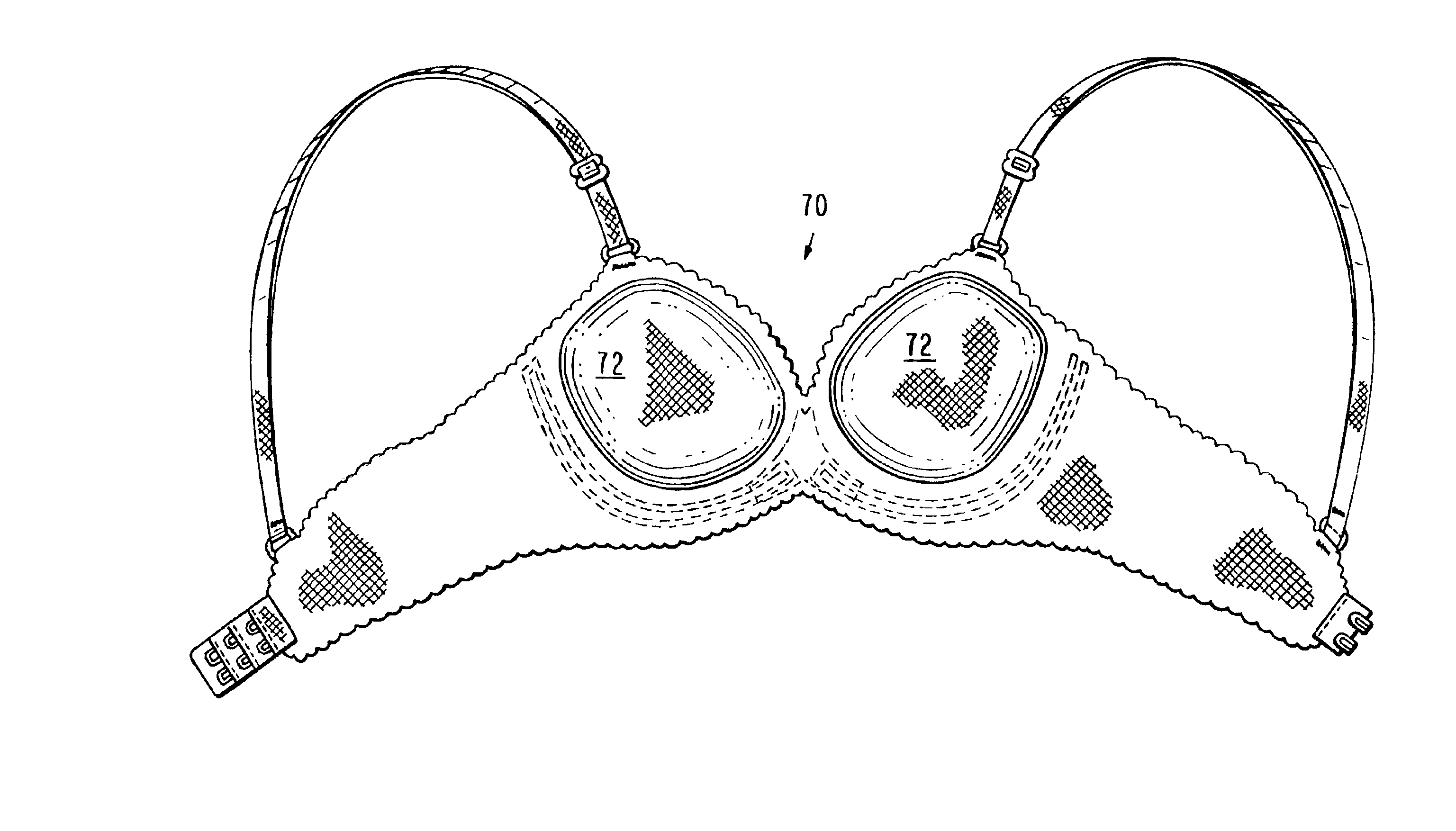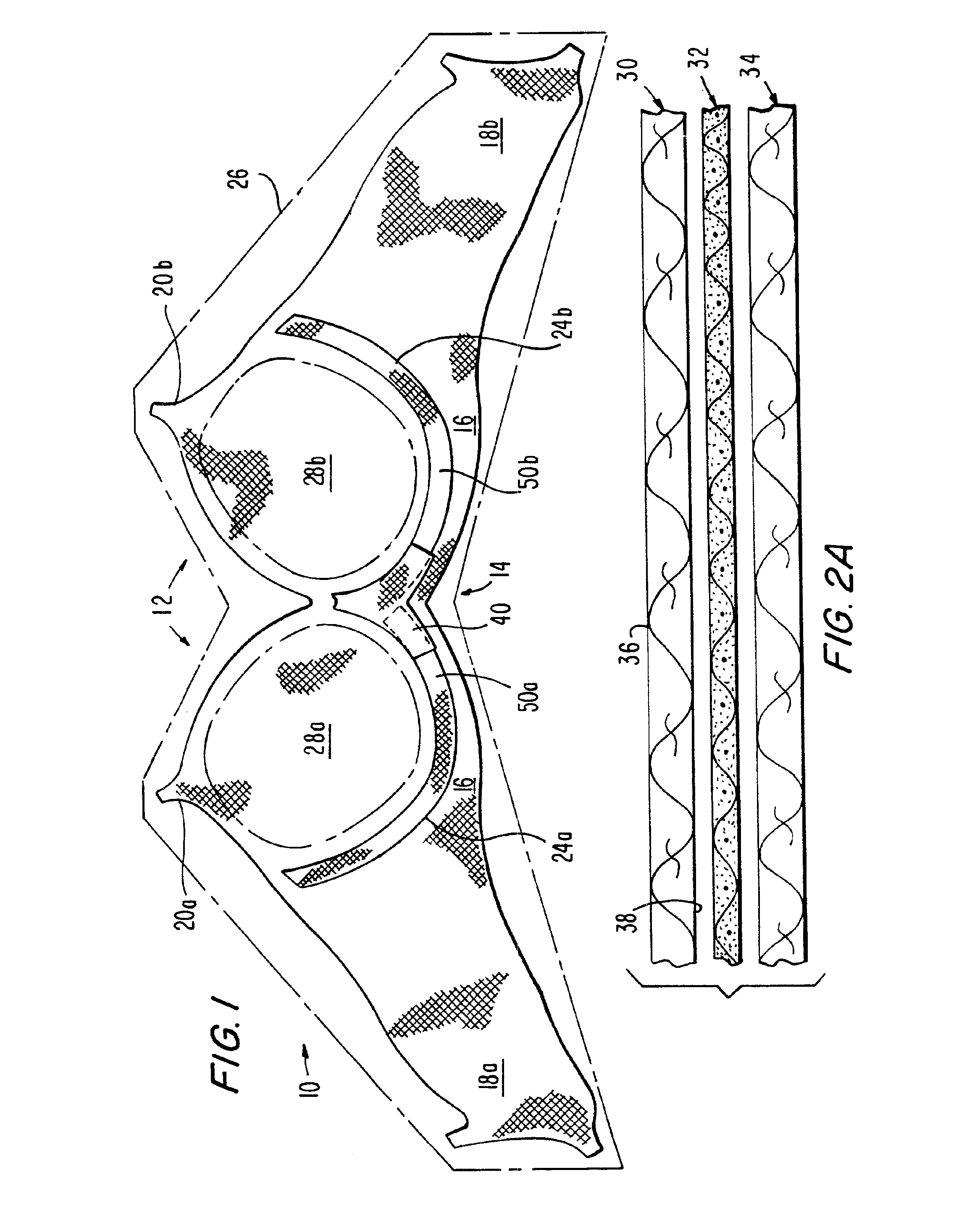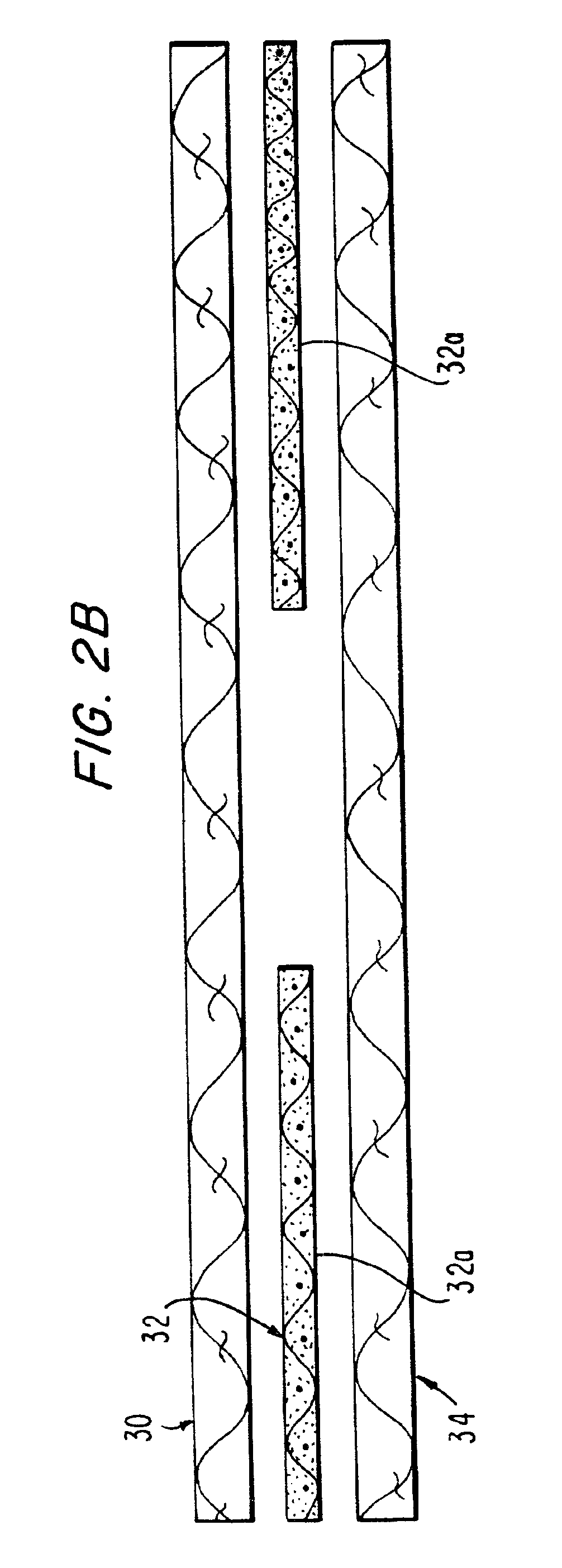Undergarments made from multi-layered fabric laminate material
a fabric laminate and multi-layer technology, applied in the field of feminine undergarments, can solve the problems of labor-intensive and time-consuming manufacturing steps, long production steps, and inability to meet the needs of women, and achieve the effect of reducing production costs, reducing labor intensity and time-consuming
- Summary
- Abstract
- Description
- Claims
- Application Information
AI Technical Summary
Benefits of technology
Problems solved by technology
Method used
Image
Examples
Embodiment Construction
As is used herein, the term facing surface refers generally to either side of a piece of fabric. As is well known to those of ordinary skill in the art, a piece of fabric has what is known as a technical front and a technical back. The technical front and the technical back of any piece of fabric may have the same or different finishes, which may, for example, be smooth or textured. The terms technical front and technical back refer to the front and back of a sheet of fabric as it is made on the knitting machine, and do not necessarily correspond to a front and back, respectively, of the fabric as it is incorporated in a fabric laminate according to the present invention. Where only one side of the piece of fabric is smooth, and the other is textured, the smooth side is generally referred to as the front (which may or may not be the same as the technical front of the fabric as it is made on the knitting machine) and the textured side is generally referred to as the back (which may o...
PUM
| Property | Measurement | Unit |
|---|---|---|
| melting temperature | aaaaa | aaaaa |
| melt temperature | aaaaa | aaaaa |
| size | aaaaa | aaaaa |
Abstract
Description
Claims
Application Information
 Login to View More
Login to View More - R&D
- Intellectual Property
- Life Sciences
- Materials
- Tech Scout
- Unparalleled Data Quality
- Higher Quality Content
- 60% Fewer Hallucinations
Browse by: Latest US Patents, China's latest patents, Technical Efficacy Thesaurus, Application Domain, Technology Topic, Popular Technical Reports.
© 2025 PatSnap. All rights reserved.Legal|Privacy policy|Modern Slavery Act Transparency Statement|Sitemap|About US| Contact US: help@patsnap.com



